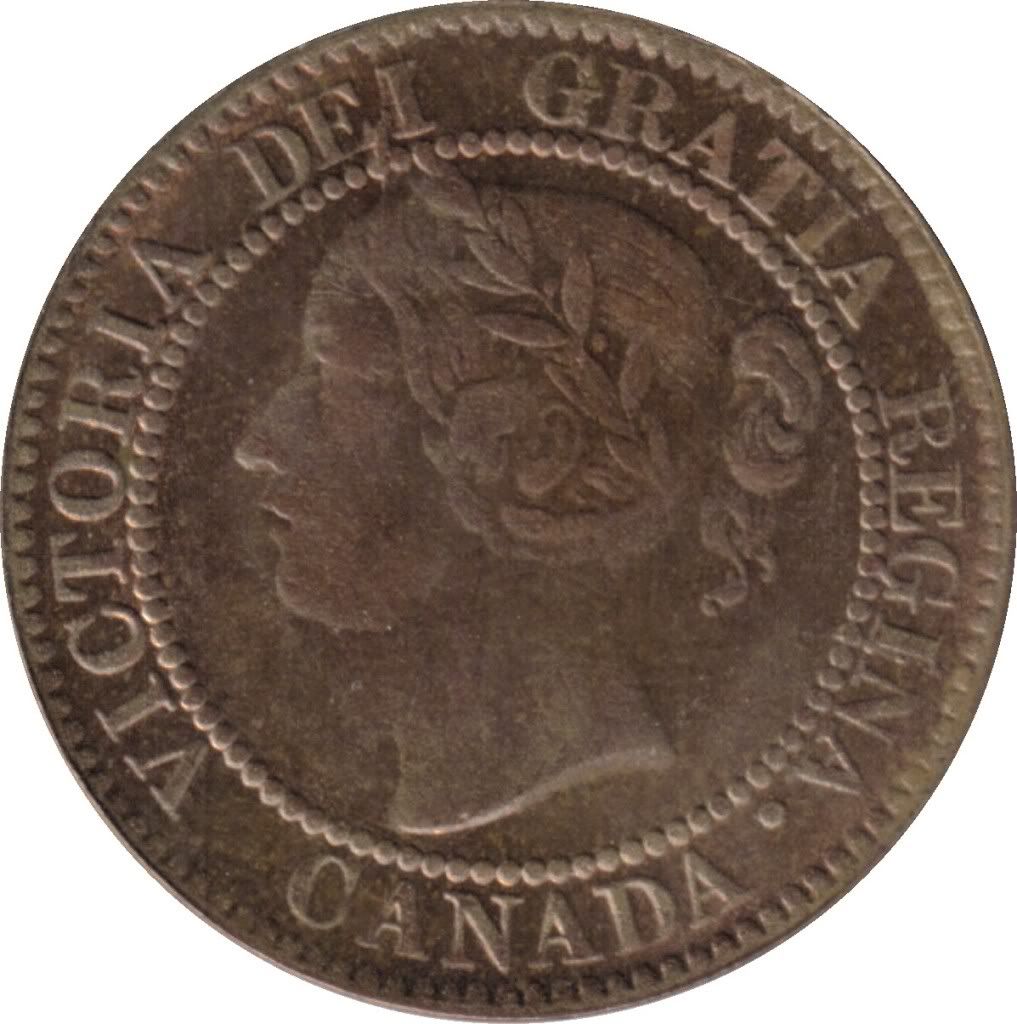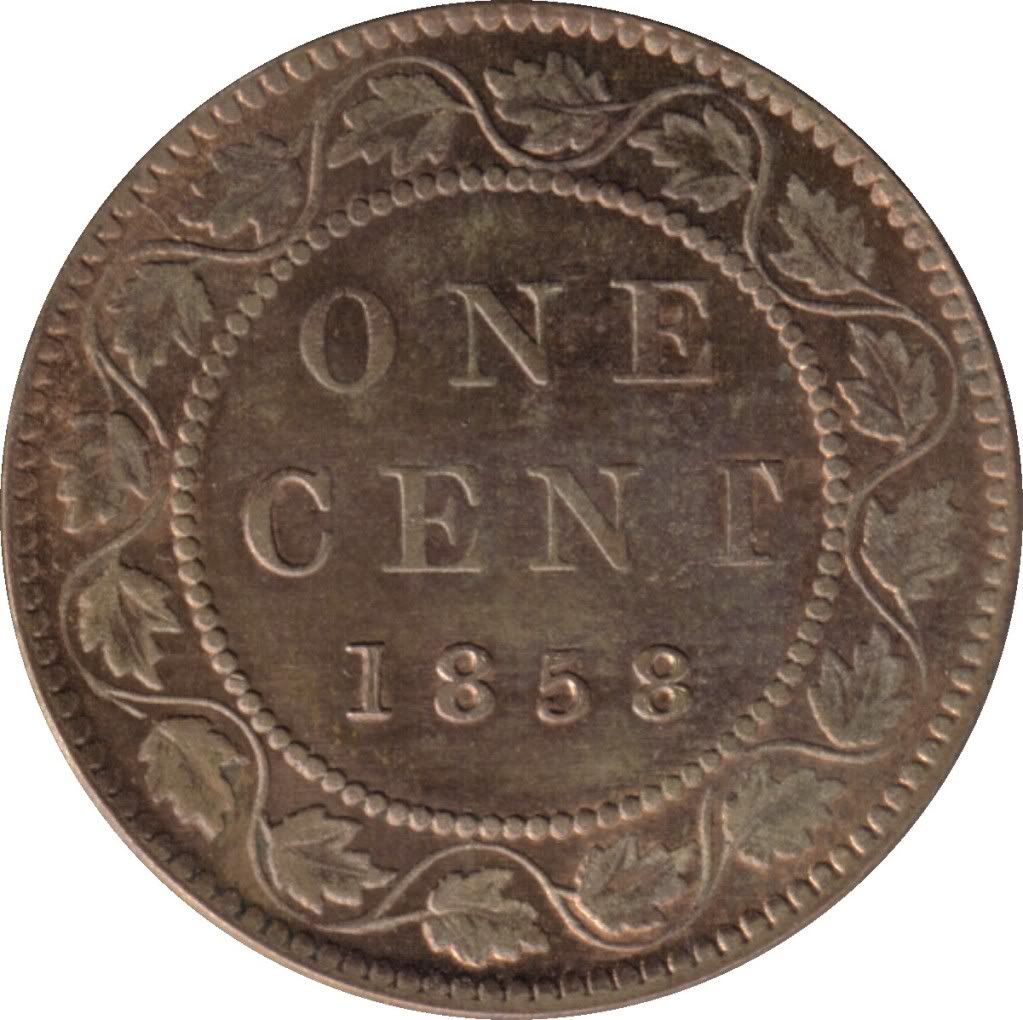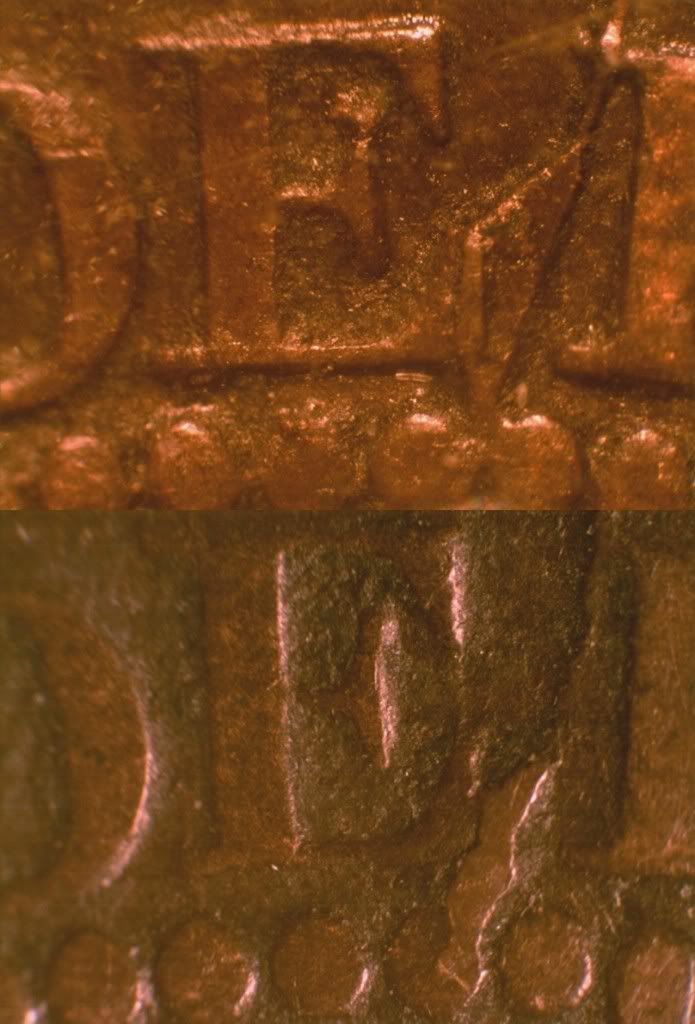This is the second of a two part series. The first article provides the background for this one so if you have not yet read it, you should start with that one first, and then finish here. This article will give you the tools to spot a Chinese counterfeit 1858 Victoria large cent. Since the basic markers are the same between the 1859 and the 1858, this discussion only focuses on the differences specific to the 1858.
Obverse Markers
The 1858 Chinese counterfeit large cent was based on the 1859 model. The exact same obverse was used for the 1858 that they used for the 1859. Victoria’s nose however has had work. There is a prominent bump at the bridge where they have attempted to strengthen her portrait. You can use all the same markers from the 1859 to identify the 1858 as counterfeit. Furthermore, this obverse die was never used on the real 1858’s so if you see one with these markers it is 100% counterfeit
 |
| Fig. 1: Counterfeit 1858 coin from Big Tree Coin Factory, obverse. Photo courtesy of Mike Marshal, used here with permission. |
Reverse Markers
The reverse used for the 1858 Chinese counterfeit large cent was also based on the 1859 model. They however did remove the entire date and then re-cut the new one into the die. The result is an 1859 die crack pattern with an 1858 date. The font used for the digits in the date is also completely wrong for an 1858 large cent and it stands out like a sore thumb. The left side of the T in CENT is missing, as if from a filled die.
 |
| Fig. 2: Counterfeit 1858 coin from Big Tree Coin Factory, reverse. Photo courtesy of Mike Marshal, used here with permission. |
Here is my short list of items to identify the 1858 counterfeit large cents coming from China.
Chinese Counterfeit
Will never be a higher grade than seen in photo.
Will not have Vicky crud in the devices.
Will not have 160 years of patina.
Will have a colour that will make you pause.
The coin will look to be softly struck.
Vicky has had a nose job, resulting in a bump at the bridge of her nose.
The obverse is exactly the same as that use for 1859.
The reverse has exactly the same die cracks as that found for 1859.
The entire date has been re-cut into the working die using the wrong font.
The T in CENT is missing the upper left side.
Will never be a higher grade than seen in photo.
Will not have Vicky crud in the devices.
Will not have 160 years of patina.
Will have a colour that will make you pause.
The coin will look to be softly struck.
Vicky has had a nose job, resulting in a bump at the bridge of her nose.
The obverse is exactly the same as that use for 1859.
The reverse has exactly the same die cracks as that found for 1859.
The entire date has been re-cut into the working die using the wrong font.
The T in CENT is missing the upper left side.
Real coin
There is no real coin for 1858 with any of these characteristics.
There is no real coin for 1858 with any of these characteristics.
The big “tell” here is the date. The counterfeit coins all have the wrong font used for the digits on a large cent. This sticks out like a sore thumb. When you see one of these, compare the obverse and reverse to the notes on the 1859 counterfeit, and the markers will be the same. All 1858 coins in the market place with these characteristics on the obverse and reverse are counterfeit. Save your hard earned cash for a real coin.
The big issue with the 1858 Chinese counterfeit is that the die crack at DEI looks similar to one found on a real obverse used in 1858. That coin was featured in the large cent variety section of the Charlton Standard Catalogue of Canadian Coins, Volume One, Numismatic Issues 2011, 65th Edition. At a quick glance, the die crack on the counterfeit in this location looks very similar to the die crack and chip on the real 1858. Don’t be fooled.
Stay on your guard and learn the markers. The photos below compare the date and the die crack at DEI of real 1858’s against the Chinese counterfeits. The die cracks and the date are the keys!
Thanks to Mike Marshal for graciously permitting the use of his photos of the counterfeit coin. More counterfeit coin photos from Mike can be found at the RCMP web site and the CCRS web site. It’s worth your effort to become familiar with the markers on your collecting interests.
 |
| Fig. 4: The die crack and chip from a real 1858 coin is shown at the top. The die crack that is on the counterfeit is similar but not the same and is shown below. |



This comment has been removed by the author.
ReplyDeleteDan as usual a very well done post. It's nice to have it all here in one clear spot. Kudos also for both the credit you gave to Mikey and his willingness to make his photos available. It is refreshing to see simple credit given when due. Keep up the good work it is noticed and appreciated. ed
ReplyDelete